- News
- Reviews
- Bikes
- Accessories
- Accessories - misc
- Computer mounts
- Bags
- Bar ends
- Bike bags & cases
- Bottle cages
- Bottles
- Cameras
- Car racks
- Child seats
- Computers
- Glasses
- GPS units
- Helmets
- Lights - front
- Lights - rear
- Lights - sets
- Locks
- Mirrors
- Mudguards
- Racks
- Pumps & CO2 inflators
- Puncture kits
- Reflectives
- Smart watches
- Stands and racks
- Trailers
- Clothing
- Components
- Bar tape & grips
- Bottom brackets
- Brake & gear cables
- Brake & STI levers
- Brake pads & spares
- Brakes
- Cassettes & freewheels
- Chains
- Chainsets & chainrings
- Derailleurs - front
- Derailleurs - rear
- Forks
- Gear levers & shifters
- Groupsets
- Handlebars & extensions
- Headsets
- Hubs
- Inner tubes
- Pedals
- Quick releases & skewers
- Saddles
- Seatposts
- Stems
- Wheels
- Tyres
- Health, fitness and nutrition
- Tools and workshop
- Miscellaneous
- Tubeless valves
- Buyers Guides
- Features
- Forum
- Recommends
- Podcast
feature
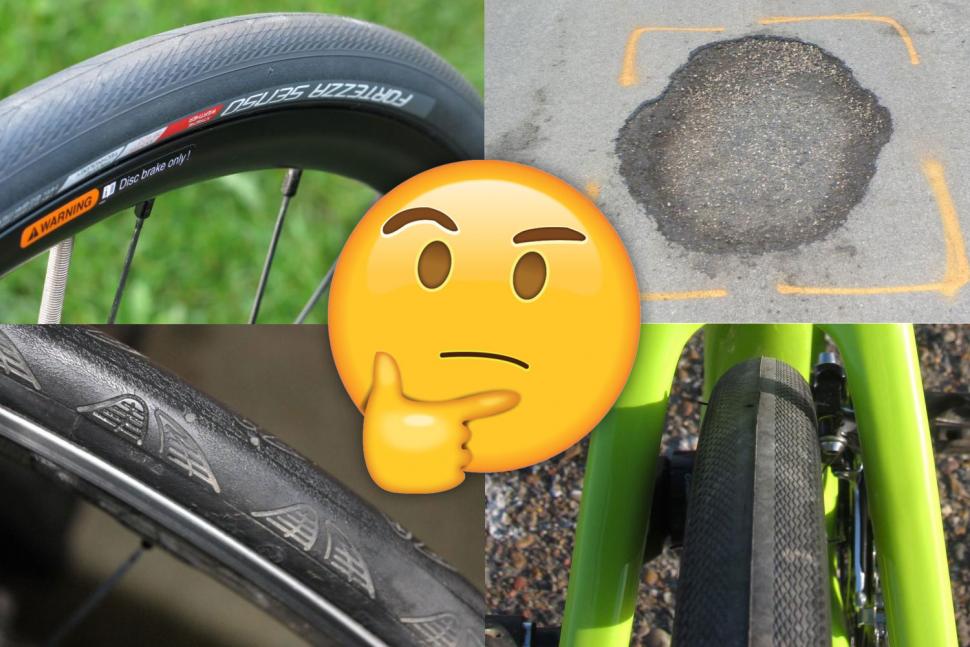 When should you change your tyres
When should you change your tyresWhen to change your bike tyres — 7 warning signs to look for
We all know that tyres don’t last for ever but exactly when do they need replacing? Here’s how to tell when the time has come for a new pair.
There are essentially five parts to a clincher tyre (standard tyres that use inner tubes, held in place by a bead that hooks to the wheel rim, as opposed to tubulars that are bonded to the wheel):
Casing The supple body of the tyre, made of nylon (usually) in various numbers of threads per inch (TPI), that’s covered in rubber.
Protection layer Manufacturers sometimes use various different types of material underneath the tread to provide resistance against punctures.
Tread The compound that comes into contact with the ground.
Bead The bit around the edge that secures the tyre to the wheel rim. These are made from wire or foldable Kevlar.
Anti-chafing strip The reinforcement that protects the bead.
Check out our guide to road cycling tyres.
Impacts
Most road bike tyres will go through their lives without experiencing too much in the way of trauma, but you might hit a pothole, a big stone, or some other obstacle that causes damage to the structure, or something might ping up from the road surface.
Check your tyres carefully if anything like this happens.
“A casing breach of any size in the sidewall/ 2mm under the tread would usually render a tyre disabled and ready for replacement,” says Shelley Childs of Cambrian Tyres, the company that distributes Continental bike tyres in the UK.
“If you hit a pothole and feel the wheel rim has made contact with the road surface, then there is a chance that the tyre sidewall (casing) has been breached, even if there is no air loss of the inner tube. Stop and check.
“Also, if you ride over something that causes an obvious bump or jerk to the handling of the bike, your tyre may have been damaged, even if you don’t suffer a puncture. Again, stop and check just to be safe.
“If you do see a tear anywhere on the exposed surface of the tyre (tread or sidewall), inspect it thoroughly and try to see if the inner tube is visible. If so, the tyre is unsafe. If not, then the casing should still be intact and you can ride on, but get the tyre checked by your local dealer just to be sure.”
Check the wheel too.
“If the tyre/tube survives a pothole smash then it’s essential that after you’ve checked the tyres you should also check your rims to make sure that their structure hasn't been compromised,” says Schwalbe's Dave Taylor. “A dented rim or displaced spoke can cause unwanted friction for tyre and tube which could lead to a puncture on a later ride.”
Tread wear indicators
Most often, though, tyres simply wear out gradually with use due to contact with the road.
Some tyres come with tread wear indicators that tell you when it’s time for a replacement.
Continental road tyres, for example, now have two small ‘tap-holes’ in the central area of the tread. These are designed to disappear as the tyre nears the end of its serviceable life. Once the holes are gone it’s time to bin the tyre, no matter how tempting it is to try to wring a bit more life out of them.
A small triangle and the letters TWI on the sidewall show you where the tread wear indicator should be.
Although it's getting worn, the tread wear indicators on this tyre (above) are still visible.
Other manufacturers use their own tread wear indicators. This one (above), for example, is on a Giant tyre.
If you’ve skidded your bike it could be that the tread wear indicators are still intact but you’ve worn through the tread in another area. You need to change your tyre in this situation.
What if your tyres don’t have tread wear indicators?
“A tyre will change its shape slightly once it has worn out,” says Shelley Childs. “As well as affecting the handling of the bike slightly, it will no longer look round in the cross section [as above], it will look more square, as the tread area has worn significantly.
“If your tyre had a tread pattern, this will have disappeared and in extreme cases, you may even see the casing material showing through.“
Dave Taylor says, “When the puncture protection belt or the carcass threads can be seen through the tread the tyre has reached its wear limit and must be replaced. As puncture resistance also depends on the thickness of the tread layer, it may be useful to replace the tyre sooner.”
Find out what tyre width is best for you.
Repeated flats
If your tyres don’t have tread wear indicators, repeatedly getting flats from small stones and pieces of glass is an indication that the tread could have worn thin and it’s time to replace your tyres.
If the protection layer or the casing is showing through, it’s definitely time for some new rubber.
Worn sidewalls
A tyre’s sidewalls will sometimes fail before the tread is worn out.
“In most cases, this premature failure is due to prolonged use of the tyre with insufficient inflation pressure,” says Schwalbe. “Checking and adjusting the inflation pressure at least once a month with a pressure gauge is most important.”
The sidewalls may be damaged if a bike is left on flat tyres for a long period. If fitted on a wheel, tyres should be inflated or the wheel should be hung up for storage.
Bead problems
If the bead is damaged and is blown off the rim when you inflate the inner tube, you need to replace the tyre.
Tread pattern
Don’t worry too much about the depth of the tread pattern – if there is one on your tyres – affecting performance. When we visited Continental last year, their experts told us that the tread pattern doesn’t make much difference on the road. It has a role in certain circumstances, but it doesn’t do much, unlike off-road when the tread pattern is vital in determining grip on conformable ground.

However, if the pattern is getting shallow, that could be a warning that the tread itself is wearing thin and that the tyres will soon need replacing.
Swapping front and rear tyres
Your rear tyre will invariably wear quicker than your front tyre. Some people will swap over the front and rear tyres after some use to make sure they wear out at roughly the same time, but Shelley Childs doesn’t think this is good practice.
“It is not advisable due to the change in handling characteristics of each tyre as they become worn,” he says. “A rear tyre will be square, whist a front tyre more rounded. To put a worn rear tyre on the front wheel would negatively affect the handling of your bike.”
Schwalbe's Dave Taylor isn't so opposed to the idea.
“This is really up to the individual rider and takes into account things like their own budget, riding style, riding distance, and riding surfaces," he says. "You would want fresh rubber front and rear for a gran fondo, for example, but would settle for a front and rear swap for your daily commute.”
Mat has been in cycling media since 1996, on titles including BikeRadar, Total Bike, Total Mountain Bike, What Mountain Bike and Mountain Biking UK, and he has been editor of 220 Triathlon and Cycling Plus. Mat has been road.cc technical editor for over a decade, testing bikes, fettling the latest kit, and trying out the most up-to-the-minute clothing. He has won his category in Ironman UK 70.3 and finished on the podium in both marathons he has run. Mat is a Cambridge graduate who did a post-grad in magazine journalism, and he is a winner of the Cycling Media Award for Specialist Online Writer. Now over 50, he's riding road and gravel bikes most days for fun and fitness rather than training for competitions.
Latest Comments
- pbunyon 2 hours 53 min ago
Looks built out of a washing machine
- Disgusted of Tunbridge Wells 3 hours 35 min ago
When you get a ticket???
- chrisonabike 3 hours 45 min ago
In one sense (the most important one) evidence is irrelevant....
- chrisonabike 5 hours 39 min ago
That was the one (same name in Scotland). Haven't tried a Boris bike yet (or Ken/Khan-cycle ?) but my understanding is they're conceptually...
- wtjs 5 hours 47 min ago
It does say '12S' on the chainring! All we need now from this 'club member' is the picture of the actual crank break
- Bungle_52 7 hours 13 min ago
I think you may have misunderstood the word carnage....
- galibiervelo 8 hours 18 min ago
Love the design. The limitation to 170 mm cranks sent me to the kickR
- S.E. 8 hours 57 min ago
I'm not doing single track (no suspensions, only 30, 35 mm tyres) so 800 lumen is enough for me, on gravel type of trails at maybe max 20-30 km/h,...
- ktache 12 hours 19 min ago
There is a pHd student at work who has an Adidas backpack in reflective iridescence, looks oil slicky in the day. I love both oil slick and...
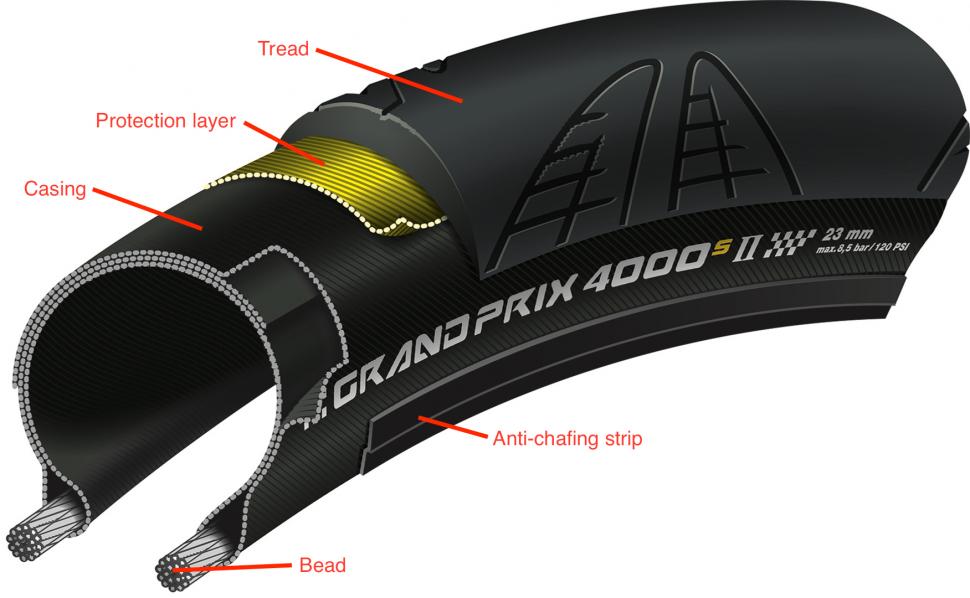

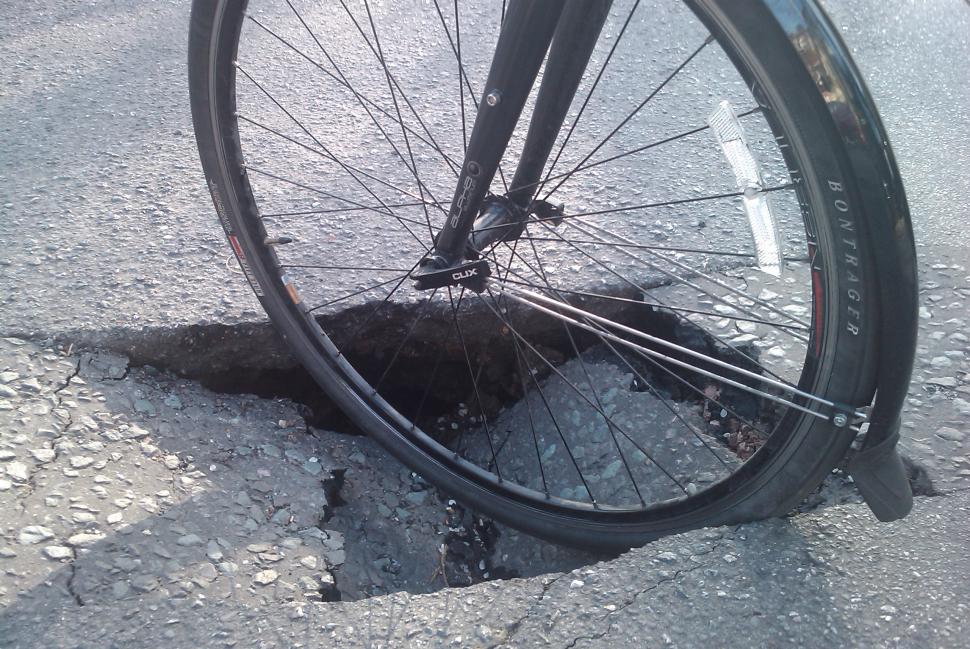
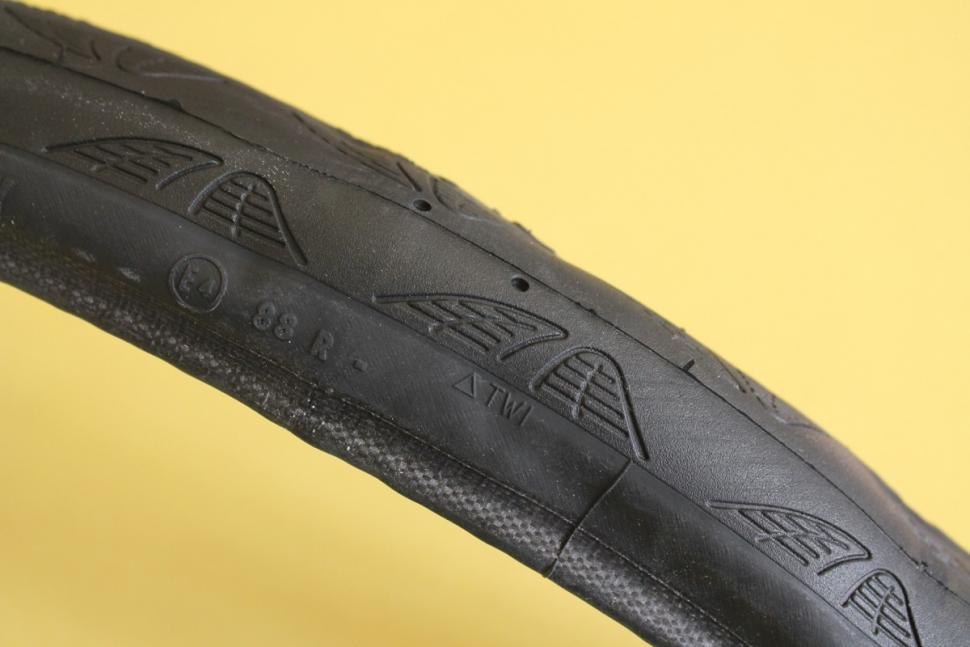
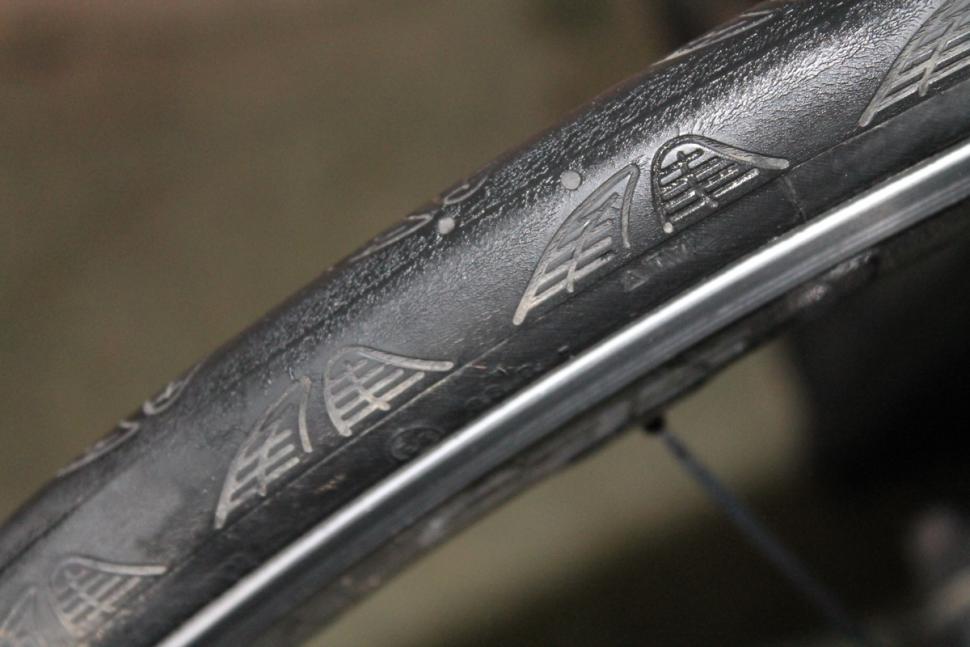
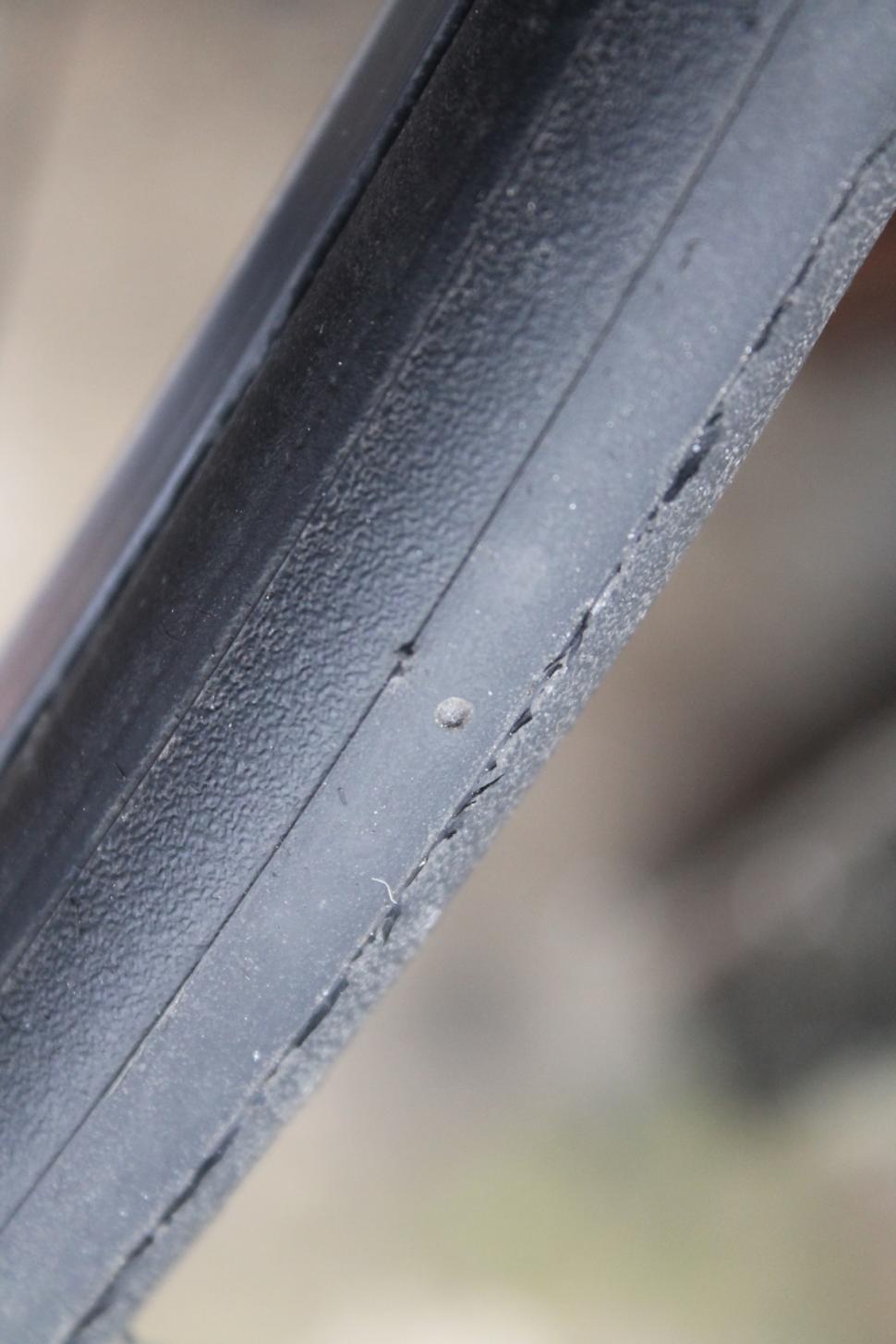

Add new comment
50 comments
When i can see inner tube
Hmm, a four year old article on when to change worn out articles.
Why even bother commenting then?
Good article. I am seeing small sized cracks along the face of the tires. What is your opinion on this. Thanks
I've just had one of the most frustrating days of my life trying to seat the valve on my tubeless Kinlin asymetric rim that just keeps leaking air. After 6 hours of on-and-off reflating, reseating and replacing the valve only to watch the bubbles emerge from the valve area, again (I know, little else to do these days!), I finally gave up and put an inner tube in. Might have another go when the weather turns....but thank Boris that the bike shops are still open.
Don't know if it helps but Pacenti do tubeless valves for their asymettric rims?
https://pacenticycledesign.co.uk/products/tubeless-valves-pair-50mm-alloy
Still waiting for mine as they got delivered to my (now closed) office. In two minds as to whether I'll bother, if I can satisfy myself that I can get tyres off and reseat them in the middle of nowhere with a mini-pump then it might be worth it, currently they feel pretty good at 45psi with tubes so not sure if it's worth the bother...
I've just binned a Conti GP GT after 6,000km of all-weathers commuting, on the rear, usually carrying a loaded pannier. The tread wear indicator still has about 1.5mm of depth to it, but I could feel when leaning the bike into a corner that the tyre had developed "corners" either side of the flat crown.
What's wrong? My arse or Continental's tread wear indicators?
Isn't this the old school reason for rotating tyres? I've been rotating my 4seasons (well, have done, twice) as the rear would start to look flatter than the front.
I also like to pretend I'm a Moto-GP rider 'scrubbing in' his tyres at the start of the race, e.g. very occassionally throwing in some pointlessly exaggerated cornering, trying to convince myself this will make up for the 99.99% of the time I ride completely upright
Hmmm. Tyre companies obviously want us to change tyres as often as possible. Perhaps they make the tyres that little bit less robust than is necessary? Also, my last tyre shopping google resulted in around 30% of the tyres on offer costing more than the tyres for my car. So 100hp 1ton vehicle has the same tyre cost as a 1hp, 100kg vehicle? And amazingly I seem to get through more bicycle tyres than car tyres, even though I do 4 times the mileage on the same crappy roads in my car. Pish. Someone's making a lot of money...
You must treat your bike to GP 5000s while fitting your car with Wong Chin ditch-finders?!
Based on some rough maths my car tyres have a contact patch of about 20 square inches each. My bike tyres have a contact patch of less than 1 square inch each. I'd rather that 1 square inch was good and grippy, thanks...
A steering wheel for an Aston Martin will cost more than for a Ford Fiesta but they both do the same job.
There's absolutely no point comparing tyres between bicycles and cars. You can get bike tyres for under £10 if you shop around. BSOs are available at Halfords and elsewhere, the tyres on those seem to last ages. But they're rubbish. We have two Apollo bikes in our house and they're both awful.
I really have a good read about your post. Thanks for sharing, it helped me a lot. An in-depth post like this with so much valuable information must help everyone in biking industry, I will definitely bookmark this for future reference.
Strangley enough, folks whose salary depend on you buying tyres sooner, advices you to check/change your tyre as often as possible. Who'd have thunk it?
Mavic Yksion tyres: "9/10 for durability": road.cc report: 26 Jan 2015!
Cuts usually trash my tyres long before they're worn out, but I got a great tip from a fellow Road.cc user recently: fill the holes with neoprene glue (which can be bought from sailing shops). I had been trying other glues with varying degrees of success, but this stuff really works. After a long stint on Conti and Vittoria tyres I'm back on Michelin Pros for the moment.... cut count is way down.
While it's obviously a good economy to swap tyres front to rear to eke out their service life, arguably you're doing yourself no favours if you have a worn tyre with a flat crown on the front.
Like everything else in cycling, you should replace them as soon as something new comes out and gets a rave review with at least a 4 star rating.
I just keep using the tires till either the cord just starts to review itself or flats are occuring to frequently, or handling starts to get weird; if the tread isn't showing I'll use them as trainer tires till they wear out completely, (if any of you decide to use a used tire on trainer make sure you wash the tire tread real well and pick out any debris stuck in the tire, otherwise the debris can put a groove into the roller drum over time). Obviously the rear wears out faster so I move the front to the rear and put a new tire on the front. Tires last about 5,000 miles (depending on tire of course, some are shorter and some are longer) which includes the rotating business I mentioned. So I buy new tires at the end of the season to be put on at the beginning of next.
My chains I keep cleaned and lubed so I average about 10,000 miles on a chain (the older wider 10 speed chains I would get 13,000 to 15,000 miles on those).
Cassettes last 3 times longer than my chains.
I may replace a set of cables about every 6 to 7 seasons.
Pedals? Pedals should never wear out. I do replace my cleats every other season, once I had to replace it after only a year, not sure what happened to that set of cleats.
Assuming I don't damage the bar tape will last about 5 to 6 seasons
Bearings rarely need to be replaced but I clean and lube mine every year. I have a bike I bought in 1984 that I raced and trained on that has over 150,000 miles on the components and none of the bearings have ever been replaced.
I buy everything I need on end of the year sales or closeout, I routinely get $65 range of tire for $20 to $25 each.
So really the only ongoing expense I have is tires, which on the high side would only be a penny a mile. I don't want to go crazy trying to do the math on the rest of it! LOL!!
You're doing great in on the bike and gear longevity front but I find it very hard to believe you get that life out of 10 speed chains.
I've run 10s for years now and will only get about 3k kms - including riding through Winters.
I tend to agree that for commuting swapping tyres front and rear makes sense. I also run the tyres on my commuter until either I get repeated punctures or the tread wears through. That usually gets me around 12000km or so out of a set of Gatorskins.
How much does it cost to recharge a Di2 battery?
It's in the noise floor. My back-of-a-fag-packet calculation gave 0.044 pence (battery capacity is 3.7Wh, 1kWh costs 12 pence). It's more than that given the charger isn't 100% efficient, but not much more. More pertinent would be: what's the lifespan and replacement cost of a Di2 battery?
Forgive my ignorance but...
“Also, if you ride over something that causes an obvious bump or jerk to the handling of the bike, your tyre may have been damaged, even if you don’t suffer a puncture. Again, stop and check just to be safe."
Doesn't this imply that I'm going to be checking my tyres for damage every 10'-15' on normal British roads? Also that on B roads it would actually be quicker to get off the bike and walk?
Dont you worry, in slovakia there are also bad A class roads and even somewhere worse than your 2nd class in uk. Well, at least somehow we got (thanks to post-socialism era), those 2nd class roads wider ((East Midlands roads used to be good for me for time spent over there ... just dont take this bloody cycling adventures so seriously and enjoy the nature, fresh air and beauty around your freedome, Happy endless miles and kilometres! Ahoj. / Nazdar.
((East Midlands roads used to be good for me for time spent over there ... just dont take this bloody cycling adventures so seriously and enjoy the nature, fresh air and beauty around your freedome, Happy endless miles and kilometres! Ahoj. / Nazdar.
Starting with a new front tyre, put it on the rear when the existing one is done, ride until strips start peeling off, then relegate to turbo duty until it literally explodes on you.
Tyre seller says change your tyres at the first hint of the newness wearing off...
Dear god.... I've just totted it up... it currently costs me 9 pence per mile to run each bike.
Thats only looking at what I'd call consumables, so;
- Tyres
- Chains
- Cassettes
- Pedals
- Cleats
- Bearings
- Bar tape
- Cables
When you look at it like that, it all gets rather expensive!
It has also made me rethink a few choices, if I am honest. Discs and electric gearing would save 1p per mile (on the assumption that I've never changed a hose on an MTB, or heard of peoples di2 cables failing).
But the biggest one for me is revisiting my pedal choice. I'll wear out a set of SPD-SL pedals in about 12 months of riding, whilst I'd realistically expect to change cleats every 1,500 miles or so. This equates to nearly 2p per mile.
Anyway, as you were..
Oh, I change tyres when they fail, wear through or if I get 3 punctures in any one tyre within a 2 week period.
You forgot cake!
And coffee!
Pages